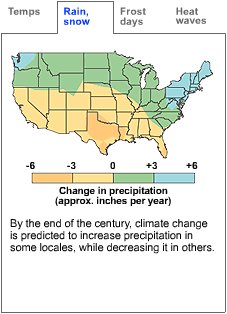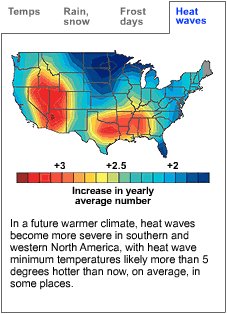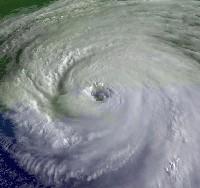Rebuild "America's Wetland" -- smarter
I'd like to tie together some interesting recent research which has a bearing on the ability to protect southeast Louisiana from a hurricane in the future.
In a recent PGR post, I linked to a map showing subsidence rates in the New Orleans area averaged about 8 millimeters per year, to as much as 28 millimeters per year, between 2002 and 2005.
Meanwhile, NASA research is showing a very troubling rise in ocean levels due to ice melt at the poles, and due to thermal expansion. Between 1993 and 2002, ocean levels rose 3 millimeters per year on average.
Another post I was working on used maps printed in USA Today which detail the possible impact of global warming, indicating that southeast Louisiana is probably in for hotter, drier conditions, which will lead, ironically, to even faster subsidence as soils become compacted.
For those who don't know, a cruel irony is that southeast Louisiana has suffered from one of its worst droughts in recorded history after Hurricanes Katrina and Rita wreaked their destruction. As a result, subsidence is causing even more structural problems, as houses which were once standing on soft ground before Katrina, were essentially floating on a substrate of -- okay, here goes -- "chocolate pudding" when New Orleans flooded, and are now standing on soil that's becoming compacted from lack of water.
These maps appeared in the May 30th USA Today:


The future will present an even more complex environmental challenge than most people are considering at present. That's going to require some thinking outside of the box, and not looking at every problem as a hammer sees a nail.
Mark Davis, the executive director of the Coalition to Restore Coastal Louisiana, is critical of plans by the Corps of Engineers to leave environmental considerations out of its master plan to protect Louisiana.
"There's nothing obvious about the obvious when it comes to doing what needs to be done," said Davis in an Associated Press story by Cain Burdeau printed by Lafayette TV station KATC 3.
Burdeau wonders if the Corps will consider how re-plumbing the Mississippi River will affect coastal marshes, or plans to plant more cypress; take a short-term approach and just build levees, or use a longer-view Dutch approach that considers unique forces of the environment and geography when designing engineering structures.
A recent Times-Picayune story by environmental reporter Mark Schleifstein offered more encouragement that the Corps of Engineers was attempting to tackle the complexity of the problem, but discouragingly suggested that the changes to the ecosystem are so rapid and dramatic now that there may be little that can be done anymore.
The Army Corps of Engineers task force investigating the reasons behind levee failures in the New Orleans area during Katrina found that many parts of the levee system were lower than authorized, largely because the land beneath them was sinking.
"As a result of subsidence, new Federal Emergency Management Agency Base Flood Elevations maps that will be available for the area in 2007 may not be accurate; yet those maps will form the basis for flood control and establish levels for rebuilding," the report says.
To counteract that concern, the report recommends designing computer models to incorporate the reasons for sinking soils, such as oil and gas production and the weight of the soil itself, and the reasons for rising sea levels, including global warming, to provide forecasts that could be used in designing new levees.
The report also recommends that the coast's disaster preparedness programs incorporate innovative methods of informing the public of the dangers caused by hurricanes, storm surge and inland flooding caused by tropical rainfall. One way would be to use 3-D computer animation to show the effects of predicted storm surge on an area's landscape, including images of existing buildings and roads.
Restoring Louisiana's coastline -- wetlands and barrier islands and shorelines -- is a simple and attractive method to provide protection from hurricanes to New Orleans and the rest of the Gulf Coast, the report says. But it warns that rising sea level and other difficulties in creating effective restoration projects make it unclear "whether such an approach is actually feasible."
Tags: Hurricane Katrina | Katrina | New Orleans | Louisiana | We Are Not OK | America's Wetland | America's Wetland | coastal restoration | Cat 5 storm protection | Levee | Flooding | Geographic Information Systems | Katrina GIS | Katrina map







3 Comments:
I read this post at the office and didn't get a chance to comment. It's all pretty depressing, sad to say. *sigh*
I did find the T-P article interesting, in that it dared to suggest that the sacred cow in all of this, the NHC, is imperfect, which I found refreshing.
Sad, but the Dutch tackled odds that were far worse. I believe it can be done if the will is there -- which is why I still haven't removed the boneless chicken graphic.
Environmental history ey? How far back was "back then"? Are you using any of that knowledge now?
Post a Comment
<< Home